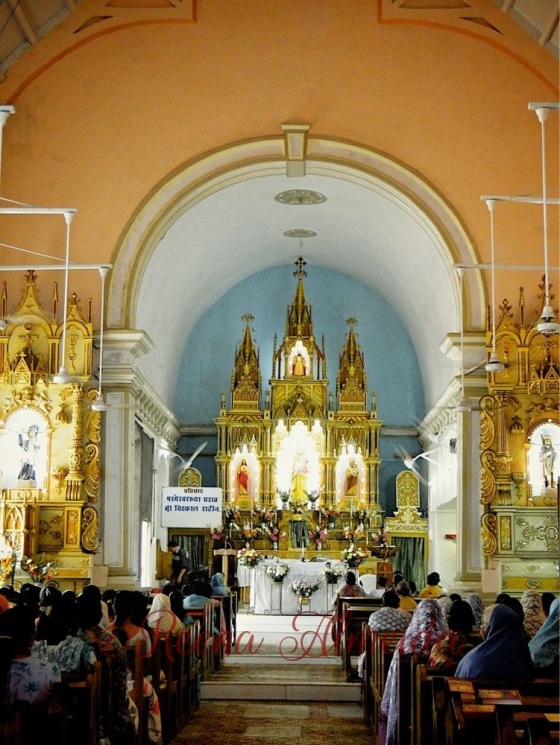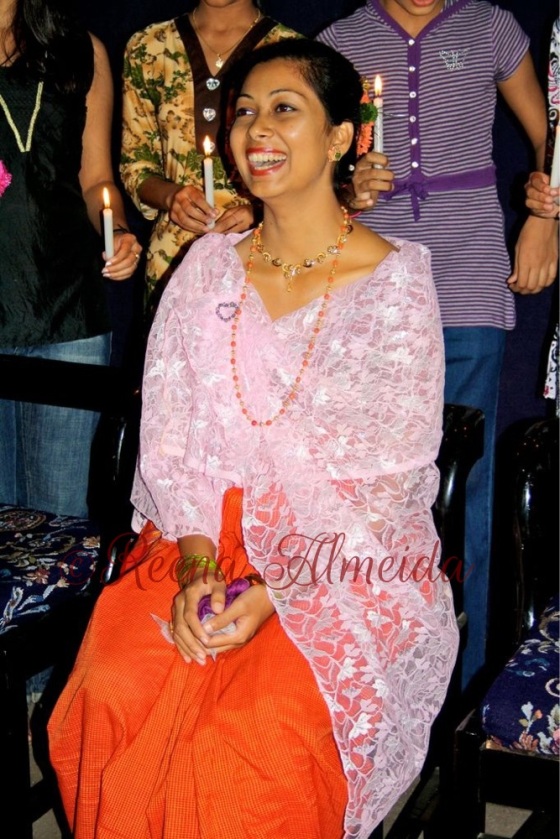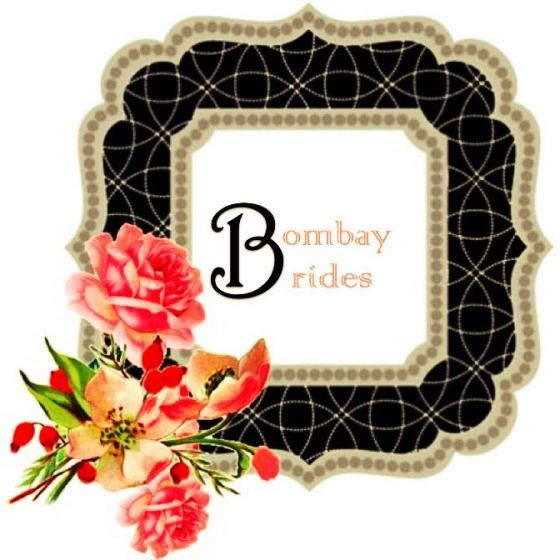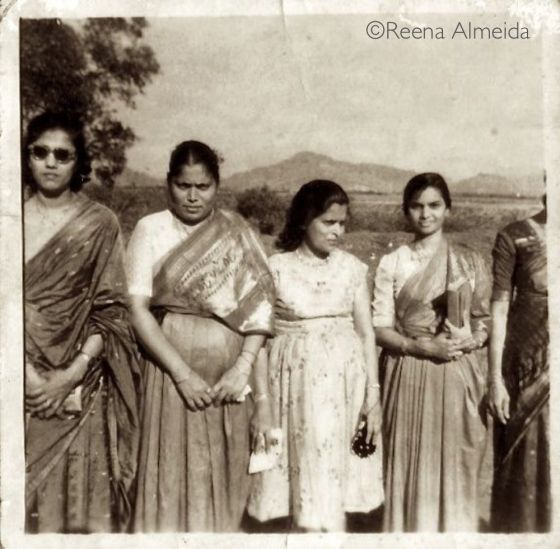General confusion over our origins is something every East Indian is intimately familiar with.
For a community with roots planted firmly in Bombay, it is difficult explaining people that we are not – as the name points out – from the East of India. We are not (well, most of us at least aren’t) descendants of the employees of the East India Company – British or otherwise.

Two ladies from Uttan wearing lugdas
The East Indians of Mumbai have descended from those native residents of Bombay (of course, it wasn’t known as Bombay back then, and nor were we known as East Indians either) who converted to Christianity – back when St. Bartholomew himself visited the Western coast of India (2nd Century AD).

Our Lady of the Sea Church, Uttan
It is to the Portuguese however, who came much later, that we owe much of our traditions, architectural styles, cuisine and various dialects. It was the Portuguese after all, who gathered the Christians already thriving in the area and were responsible for ensuring the continued existence of parishes and churches.
Had the British not been such a dominating influence on Indian politics and society, the East Indians would have probably continued using the moniker Portuguese Christians. However, to differentiate them from the other Catholic communities who had flocked to the city, they assumed the name ‘East Indian’.

A selection of the traditional 10-yard East Indian sarees called lugra
Over the years, the East Indians have kept alive the traditions that were carried out before Roman Catholicism and Latin took over our religion and language. Coastal Konkan foods like sanna (soft rice flatbread), bombil (Bombay Duck) fry and rural Maharashtrian foods like dried mango fish curry and cucumber cake, to name a few, find their way on to our tables.
The class system exists in our community and while it no longer holds as much power over modern East Indian society, it does help differentiate the various dialects, cultural traditions, customs and even the kind of masalas and pickles we make!

East Indian pork Indyaal (vindaloo) cooking over a slow wood fire
Marathi however, is considered the mother tongue of our people and for written communication we use the Official Marathi prevalent in the state of Maharashtra. The dialects however, differ from region-to-region.

Making foogyas – deep-fried balls of flour fermented with palm toddy
For instance, in Vasai (Bassein) alone, there are the Valkar, Vaadval, Kaado, Koli, Paanmaali, Maankar, etc. – each with their own dialect and with subtle but definite differences in wedding customs, cuisine and jewellery among other things.
I shall use my own people (Valkar) and my husband’s (Vaadval) as an illustration of this difference.
Differences of dialect:
English – Where have you been?
Valkar – Kaila gelti/gelta?
Vaadval – Katey geli/gela?
{The East Indian Kolis, to mention another group, have a more lilting way of speaking and the sibilant sounds are more stressed.}
Jewellery:
The Valkar gold jewellery is more reminiscent of delicate floral and geometric patterns, while Vaadval gold jewellery is chunkier and heavier in design and pattern.

Aanjelanchi Kaadi – a traditional headpiece made from gold foil, pearls and coral
It is taboo these days to get into details about the class divisions, and rightly so. But just to illustrate a point, back in the days of the British, the Valkars tended to pursue clerical/office jobs while the Vaadvals were landowners and farmers – these occupational details further shaping the dialects and certain customs.

Wearing the traditional poth (long chain) made of gold and coral over a shawl and a lugda
Our homes were all built the same way though – cow dung-floors, tiled roofs, wooden beams supporting the roof, a proper hearth in the kitchen, a verandah with enough space for a wooden swing and a pit or two in the floor to pound spices. These homes are rare now and most are uninhabitable, except for ones in the deepest gaothans (villages).
Today, the East Indians are just one of the many minorities living in their home state and largely forgotten by the rest of Mumbai.

The traditional morlis are still in use for slicing onion, grating coconuts and cleaning fish among other things.
But we are present in Vasai, Uttan, Gorai, Mazagaon, Mahim, Vakola, Kalina, Marol, Chakala, Bandra, Parel, Parla, in every ‘Galyan saakli sonyaachi‘ sung, in the beats of the ghumat at weddings, in piping hot, soft foogyas, in spicy pork indyaal (vindaloo) made using the East Indian Indyaal Masala, in the famous Bottle Masala, in the weave of vivid, bright lugdas and in a lot of Fernandes’, Pereiras, Mirandas, Almeidas, Sequeiras, Rebellos, Lopes’, Furtados, D’mellos, Gonsalves’ and D’souzas.
These last names may be shared by a lot of Goans and Mangaloreans as well, but look closer and you just may be able to tell an East Indian from the other Christian Indian ethnicities.
Note: While I am no scholar on East Indian lore, I have tried my best to present a legitimate summary of my community from everything I’ve learned growing up as a girl in Vasai. If there are any points you feel must be included or corrected, I invite you to email me at almeidareena at gmail dot com. I would appreciate your inputs towards presenting a more accurate picture of the East Indian community of Bombay.











